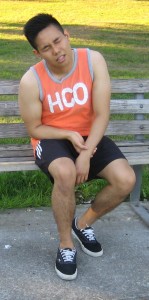Ganglion cysts are lumps filled with fluid that develop along the tendons or in the joints. This condition is not cancerous, but causes pain if they press on a nerve. The bumps can develop on the hands and wrists, but can also develop on the ankles, feet, shoulders and the knees. They can also develop outside of the joint capsule surrounding the joint or a tendon sheath which are the fibers that connect muscle to bone.
The bumps are small or bigger than a cherry. Ganglions increases in size during activities where more fluids accumulate in the sac. Adults ages 15-40 years are susceptible to this condition and usually common among women.
Causes of ganglion cysts
- Ganglion cysts can be caused by overuse or repetitive movement
- Joint injuries

Apply a warm compress on the affected area for proper circulation of blood in the area, promote fluid drainage and lessen the swelling and pain. - Due to inflammation or irritation of the tendon sheath or joint capsule
- Mucous cyst ganglion that develops with arthritis of the hand and affects the joint near the fingernails.
Treatment
- Apply a warm compress on the affected area for proper circulation of blood in the area, promote fluid drainage and lessen the swelling and pain. Soak a washcloth in warm water and wring out the excess and place it on the area for 5-10 minutes at least 3-4 times every day until cyst disappears.
- Black tea has anti-inflammatory properties that lessen the swelling and pain. Dip black tea bag in warm water for at least 5 minutes and remove and wring out the excess water. Apply the moist and warm tea bag over the ganglion cyst for at least 10 minutes. Repeat this process several times every day.
- Wear a brace or a splint around the affected area to prevent unnecessary movement and for fast healing of the area. The cysts become large when moving the joint and restricted movement shrinks the cysts. Avoid wraping the splint too tight to prevent tingling, numbness, pain and coolness in the hand.
- In a tub filled with warm water, mix a tablespoon of Epsom salt and then soak the affected area in the solution for at least 20-30 minutes every day for several days. Epsom salt has wound healing properties that lessen and heal the cyst in a few days. It also relieves the inflammation and pain caused by the cyst.
- Take the prescribed over-the-counter pain medication such as ibuprofen to lessen the pain and inflammation.
- If the cyst develops on the foot or the toe, avoid wearing shoes that squeezes or constricts the cyst. Open-toed shoes or flip flops are good for the condition so that the cyst can heal on its own. Avoid shoes made of leather or polyester to prevent irritating the cyst.
- Avoid hitting or draining the cyst without medical help to prevent damaging the tissues around the cyst.
- If the ganglion cyst accidentally breaks open on its own, cover the affected area using a thin layer of petroleum jelly and a non-stick bandage. Replace the bandage regularly.
FACT CHECK
https://www.webmd.com/a-to-z-guides/ganglion-cyst#1
https://www.mayoclinic.org/diseases-conditions/ganglion-cyst/symptoms-causes/syc-20351156
https://orthoinfo.aaos.org/en/diseases–conditions/ganglion-cyst-of-the-wrist-and-hand/
